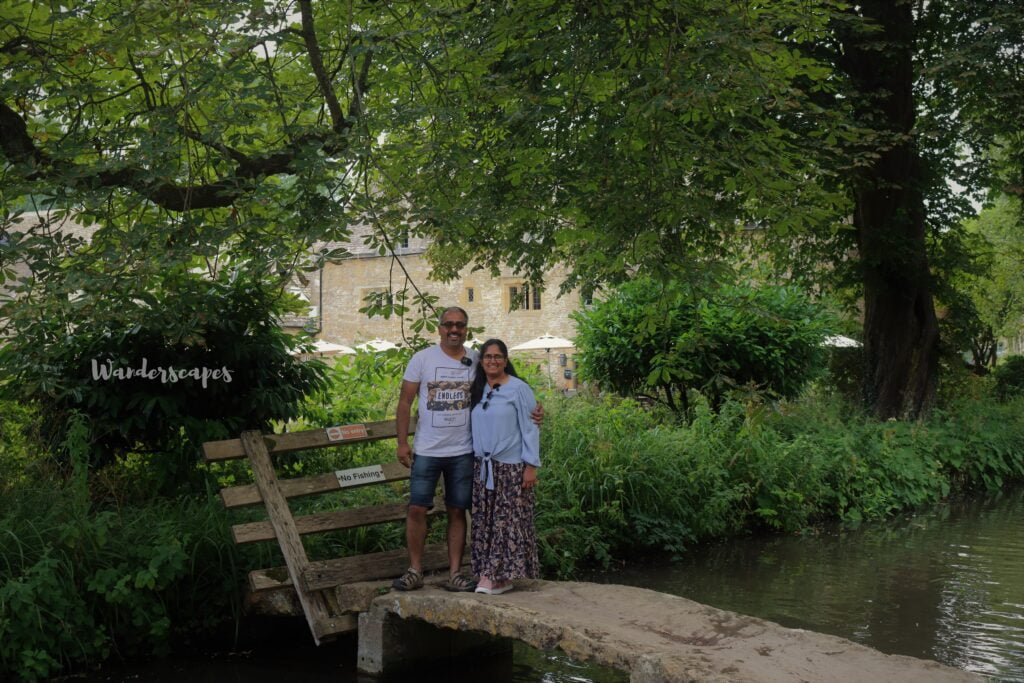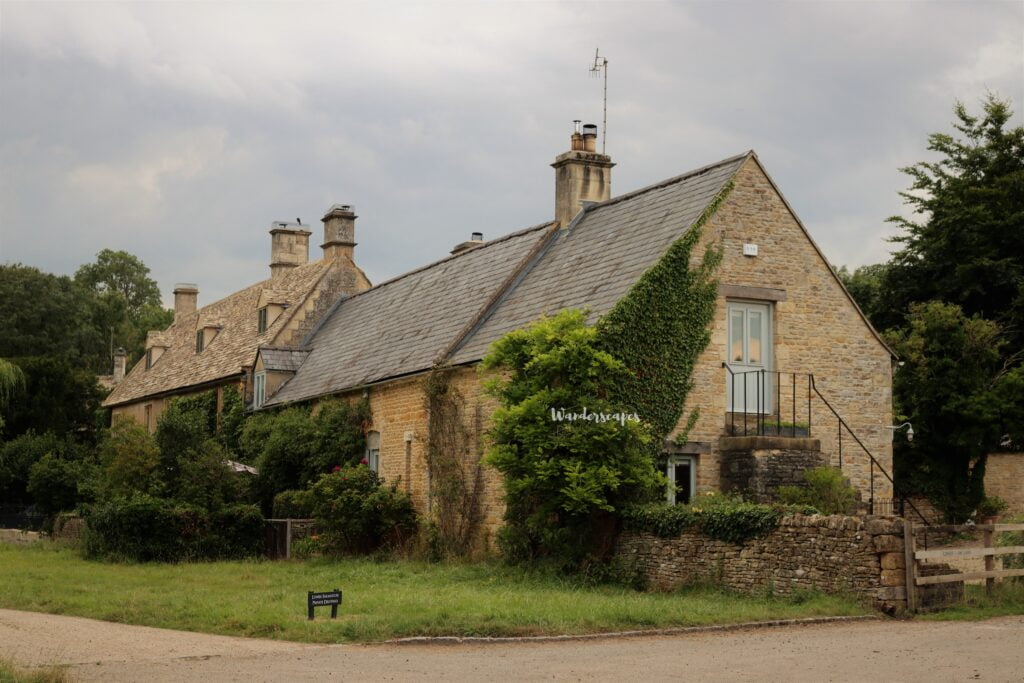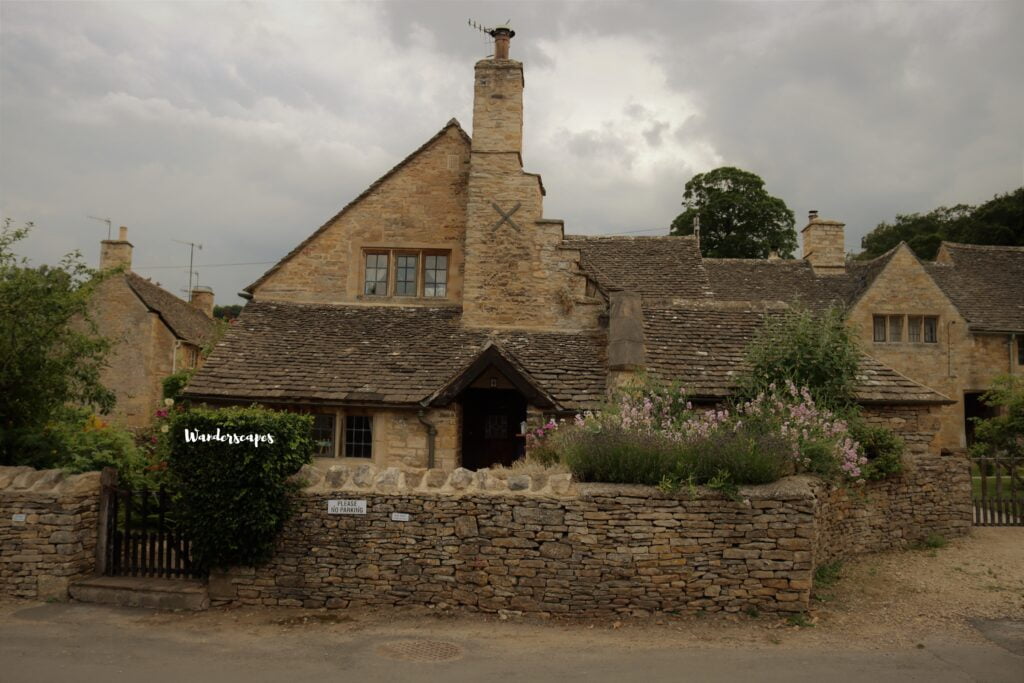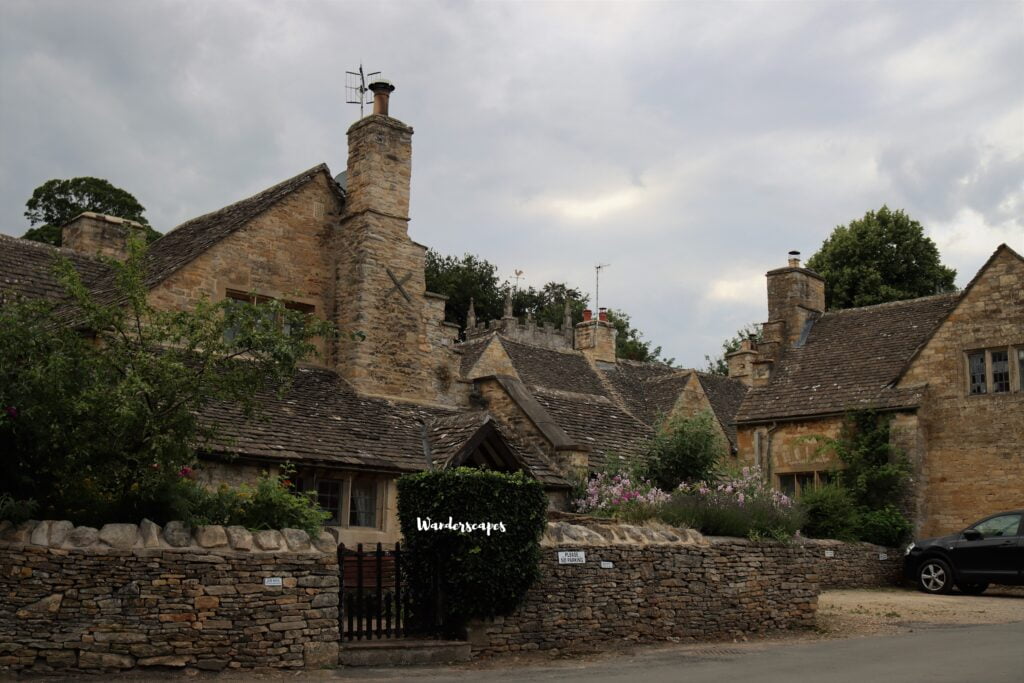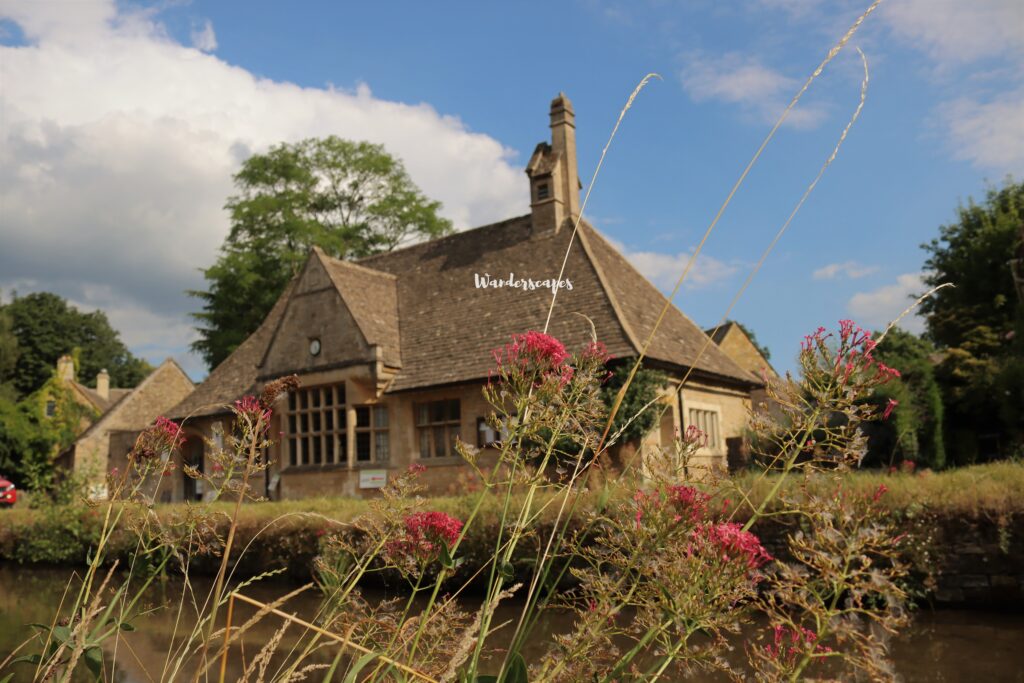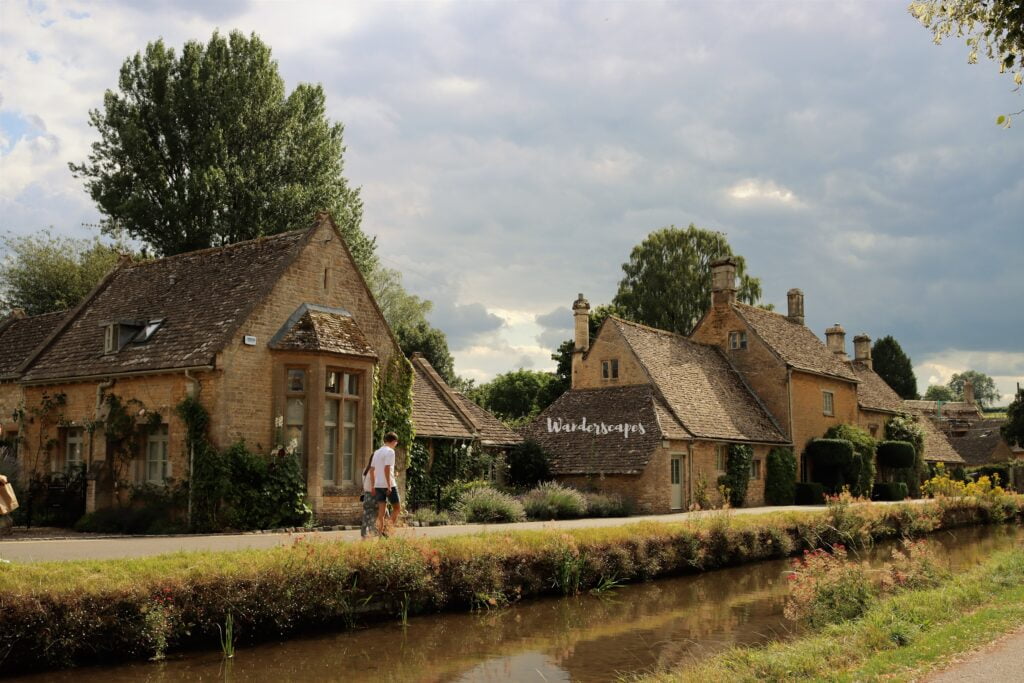After spending a wonderful time in Bourton-on-the-Water, we headed towards our next destination, Lower and Upper Slaughter villages. They are two of the most picturesque villages in England. During our travel research, we read many blogs and saw several videos on these two places. The more we read and saw, the more enchanting they seemed.
Located just a couple of miles away from Bourton-on-the-Water (just a five minutes drive), these two charming villages are not as popular among tourists as Bourton-on-the-Water.
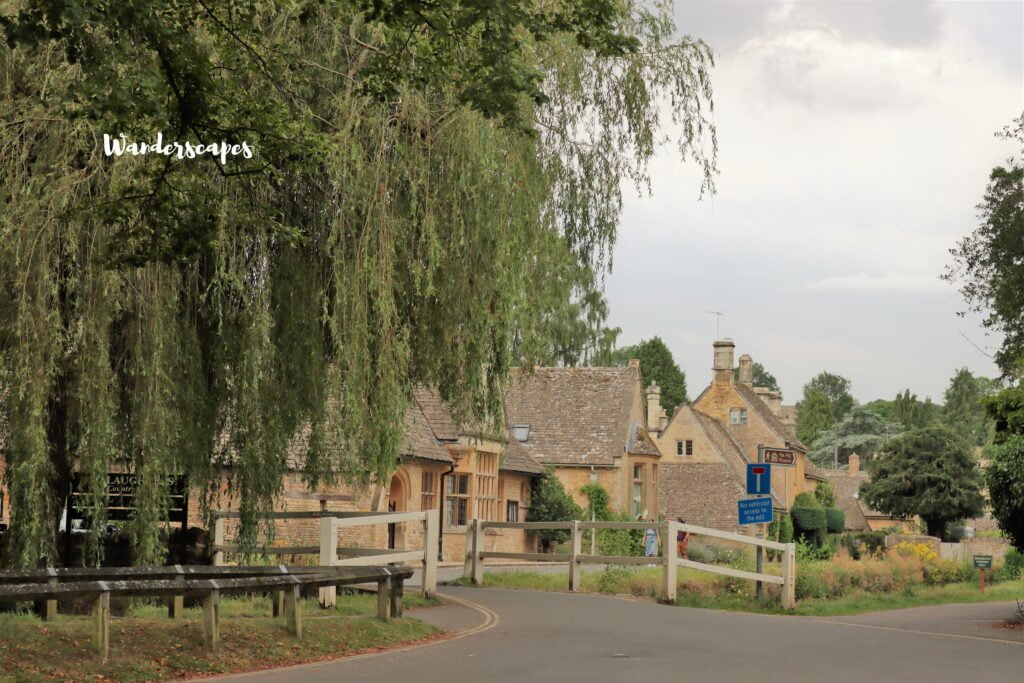
Slaughter – What a Strange Name!
The first thought that crossed our minds when we heard the name slaughter was – how can a place have such a hideous name? Were these places the sites of some horrible massacres in the early days? Did an army slaughter the whole of the village? Several questions popped up in our minds in a matter of seconds. Surely, it has to be something gruesome – otherwise, how can a place get such a name?
Then we did some research and found out that the name slaughter came from an Old English word, ‘Slohtre‘, which simply means a wetland or muddy place. Contrary to all the thoughts we had in our minds when we heard the name, it had absolutely nothing to do with killing things.
Not too strange after all, is it?
Lower Slaughter – An Idyllic Charming Village
We arrived at Lower Slaughter in a matter of minutes and we knew there weren’t any designated parking places. So we parked our car by the side of the road – like several others before us, and explored the village on foot. As soon as we got out of the car we saw a river flowing by the side.
The scene before us was charming – a lovely river flowed by the side of a village road, children playing by the riverside, couples taking a stroll along the path. We felt a sense of peace and calm within us. We walked towards the river and stood by its side admiring the scenes before us. Then we went and stood over a small bridge over it and clicked some pics

On the bridge 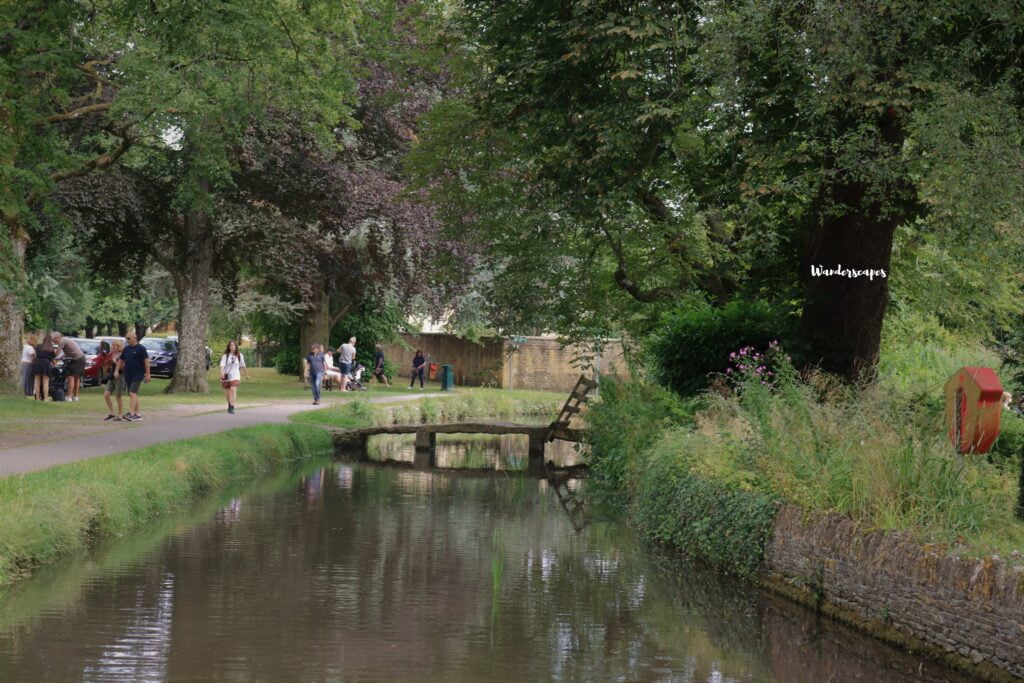
River Eye
Then we walked ahead towards the village, crossing a bridge. The scene before us blew us away! How can any place look so beautiful? It was such a wonderful sight that we felt all we wanted to do was stand there and enjoy the view forever. The River Eye was flowing calmly across the village and on both sides stood some of the most wonderful cottages we ever saw. It was something straight out of a picture postcard!
The Village Centre
We stopped at what we think was the market square in the early days. It was a small garden-like area with a tree and a strange structure in the middle. At first, we thought it was some memorial or something. Later, on a closer look, we could see a pipe inside a lion’s head (which, we later realised could be something else actually). However, the pipe was sealed off. We think it was the part of public water supply in the olden days.
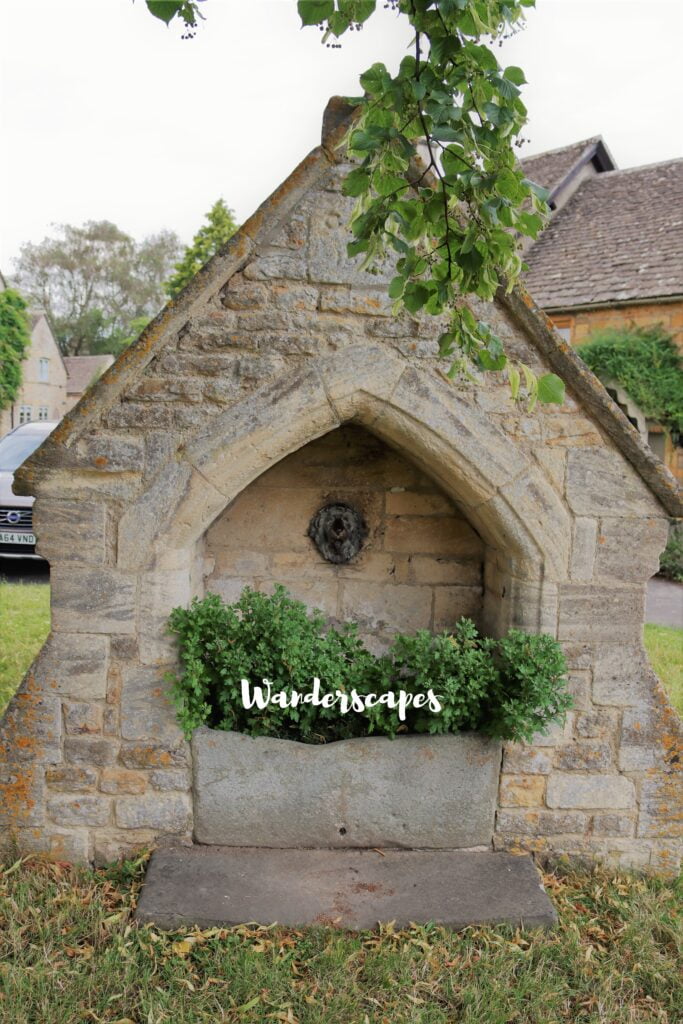
Guess what? 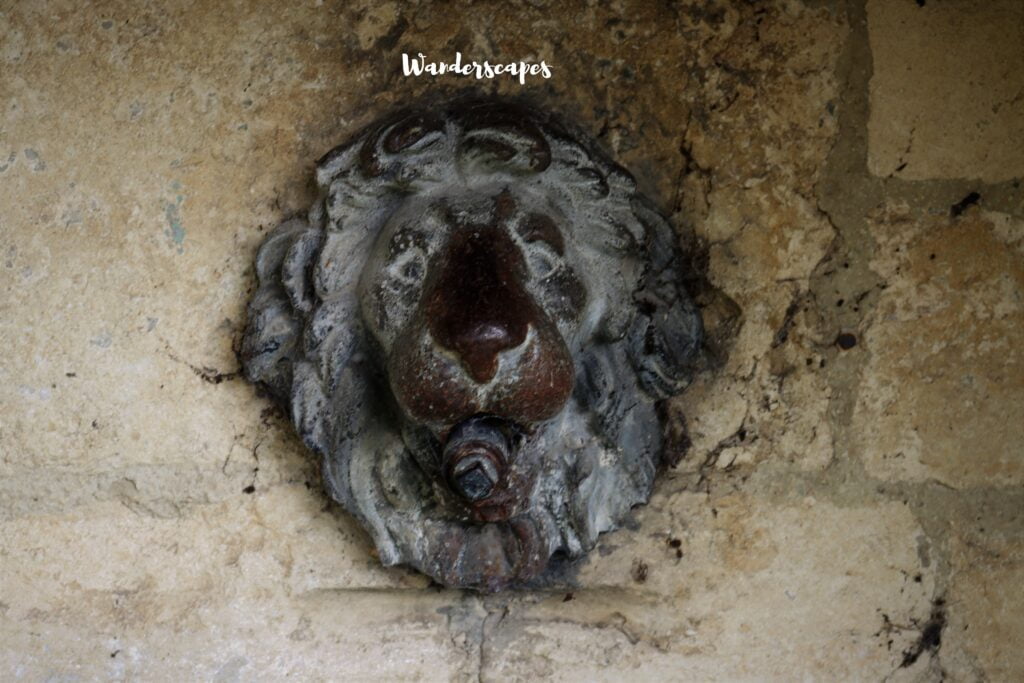
A Lion or Cotswold Lion?
Walk by the Riverside
When you arrive at a pristine village full of incredible beauty, you want nothing but get lost in it all. A walk along the village is refreshing for more reasons than one. The calm, quiet atmosphere puts your mind at peace and the lovely sights are a treat for the eyes.
The beautiful honey-coloured yellow limestone cottages on both sides of River Eye feel like a scene from a fantasy world. We couldn’t believe that such unspoiled beauty exists even today. However, the fact that no new construction has happened here since 1906 is one reason for its rustic charm.
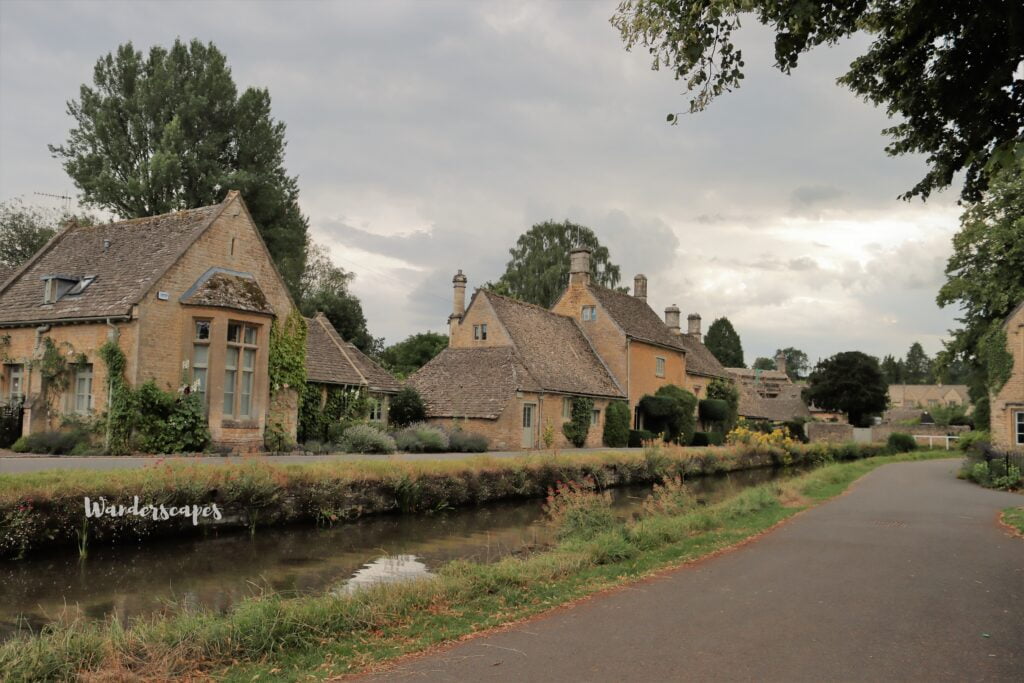
Lower Slaughter 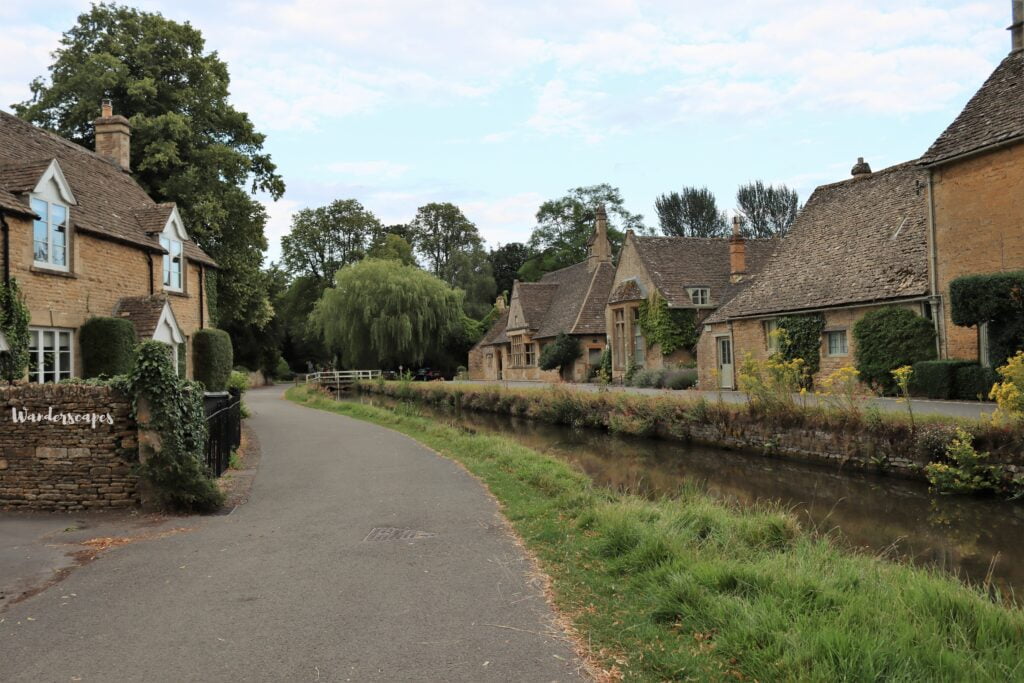
Village view
The Mill
Lower Slaughter is not a touristy place at all. Unlike Bourton-on-the-Water, there is not much to do here. The chief attraction is a (restored) 19th-century mill at the corner of the village. The mill is not in use since 1958. It attracts immediate attention because of its tall chimney. This red brick construction is the only structure that’s not made of Cotswold stone in the entire area. There is a giant water wheel by the side of the mill and it is an exciting sight to see it in action.
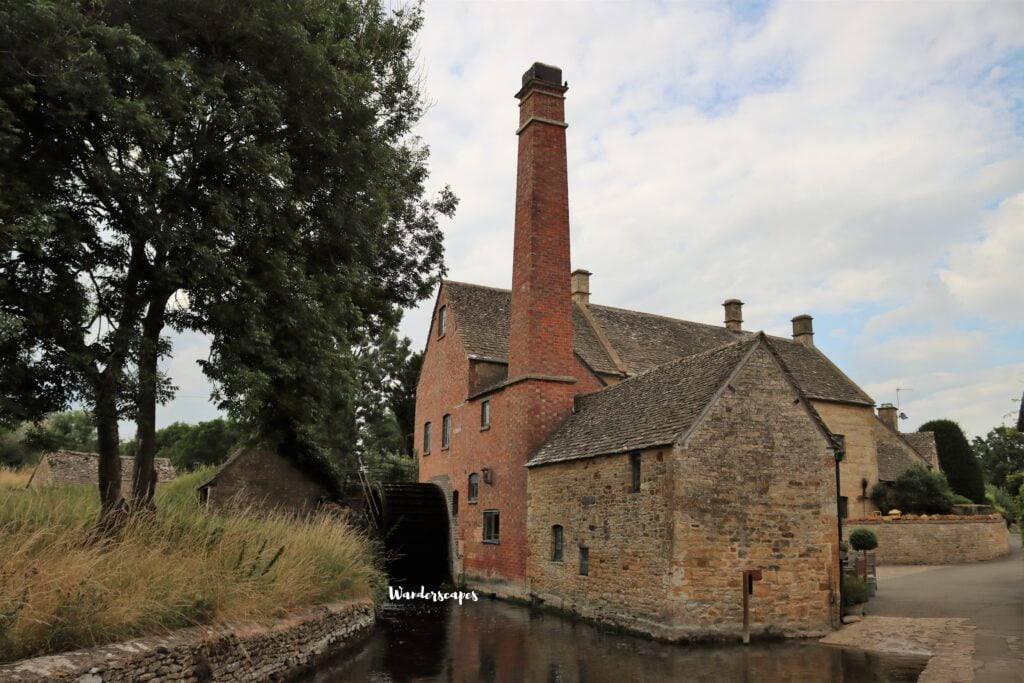
Old mill 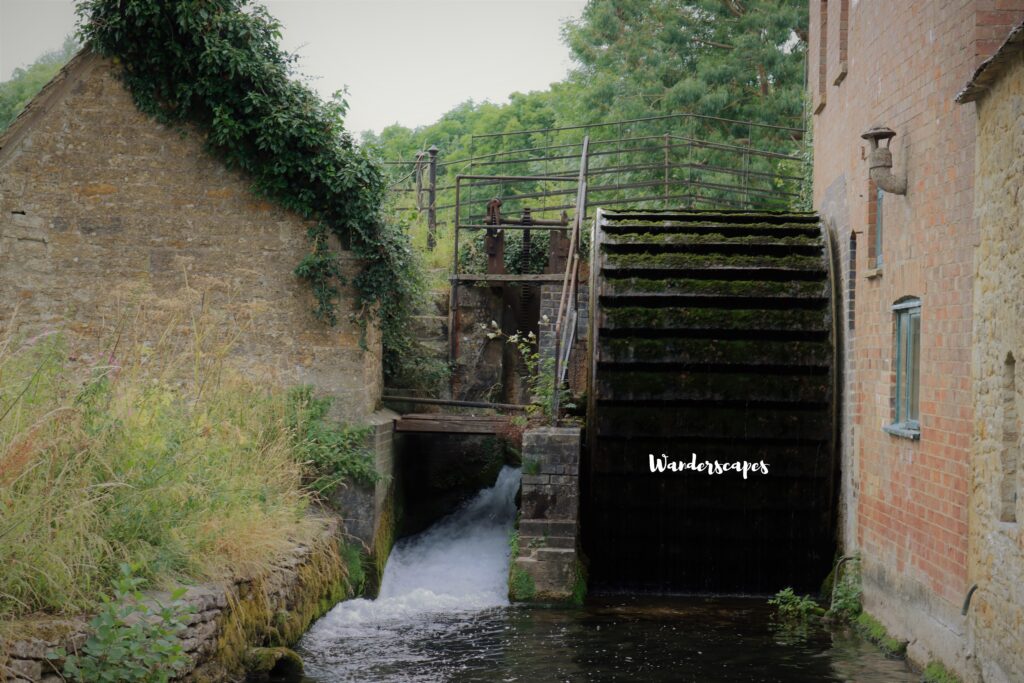
Water wheel
Museum & Tea Room
The mill has a tea room and ice cream parlour for visitors. It houses a small museum too. We arrived well past the opening time and so, we couldn’t go inside. The mill was a part of the Lower Slaughter Manor, built in the year 1658 for the High Sheriff of Gloucestershire. The Manor now functions as a grand country house hotel.
Parish Church
Lower Slaughter is home to the Parish church of St Mary. Originally built in the 13th century, it was re-built in 1867. The impressive spire and settings give it a majestic look and feel.
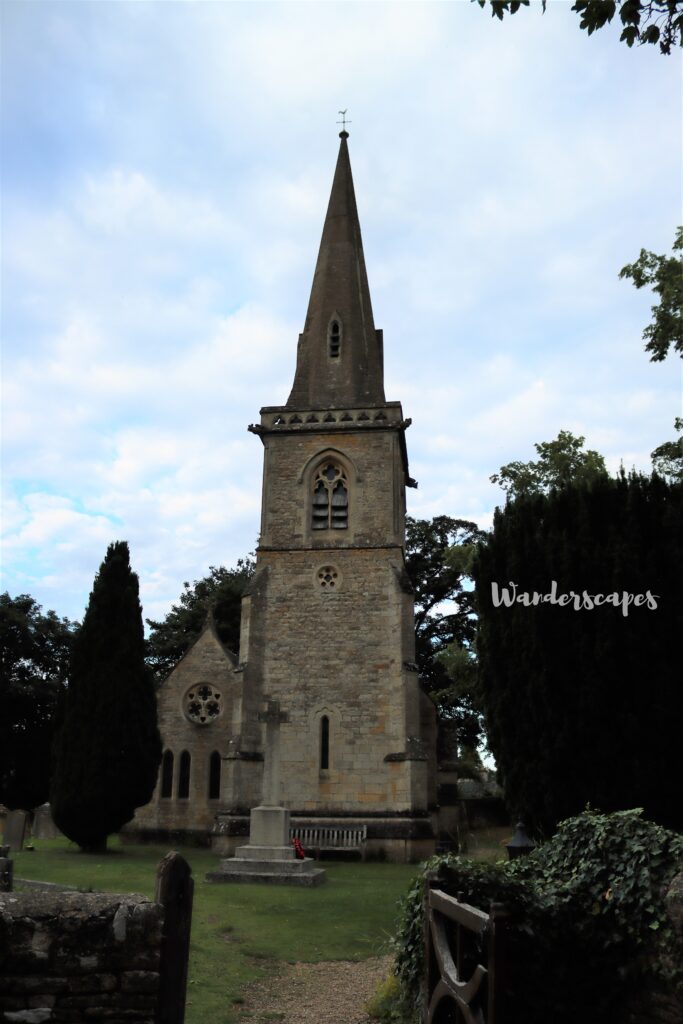
Upper Slaughter – An Unknown Gem
Around a mile and a half from Lower Slaughter lies the beautiful village of Upper Slaughter. This pretty village on the hillside sees very few visitors. Most visitors to Cotswolds visit Bourton-on-the-Water and a few of them visit Lower Slaughter. Even a lesser number of people visit Upper Slaughter.
Upper Slaughter Manor
Around a mile and half from Lower Slaughter lies the beautiful village of Upper Slaughter. This pretty village is tucked up on the hillside and see very few visitors. In fact, most visitors to Cotswolds visit Bourton-on-the-Water and a few of them visit Lower Slaughter. Even lesser number of people visit Upper Slaughter.
Sights on the Way
Like Lower Slaughter, there are very few parking spots in Upper Slaughter for visitors. So, we decided to go there on foot. At first, we thought of going through the village path from Lower Slaughter, but then felt it would be better to take the main road. The logic was, even if we got lost, it would be easier to find our way back. It was getting late in the evening and we didn’t enjoy the idea of getting lost in the wilderness in dark.
So up we went, enjoying the countryside views. We saw sheep grazing on the hill and at a T junction, turned right towards Upper Slaughter. There we passed the Upper Slaughter Manor, a majestic looking countryside manor. The view from the outside was exceptional – it would be grand inside too.
A Quiet Village
Soon, we reached the village centre. We couldn’t believe there was this charming village tucked away from all the hustle and bustle of tourists. The setting was beautiful – lovely cottages that stole your heart the moment your eyes set upon them. If not for the few cars parked at the village centre, we would’ve thought we time travelled a few centuries back.
The Ford
Apart from the elegant houses with beautiful gardens, we could see a village hall, a market square, and a church. Further along the road is a ford – where you can drive through the River Eye. We couldn’t resist the urge to cross the water on foot and although the water was cold, it was an enjoyable experience to cross the river. If you don’t fancy getting your feet wet, don’t worry – there is a footbridge to cross over.
Lords of the Manor Hotel
All the vlogs recommended enjoying a cream tea at the Lords of the Manor Hotel. We wanted to try it too. But, the hotel was closed for visitors owing to a private function and so we couldn’t taste it. So we turned back to the village centre and walked back to Lower Slaughter.
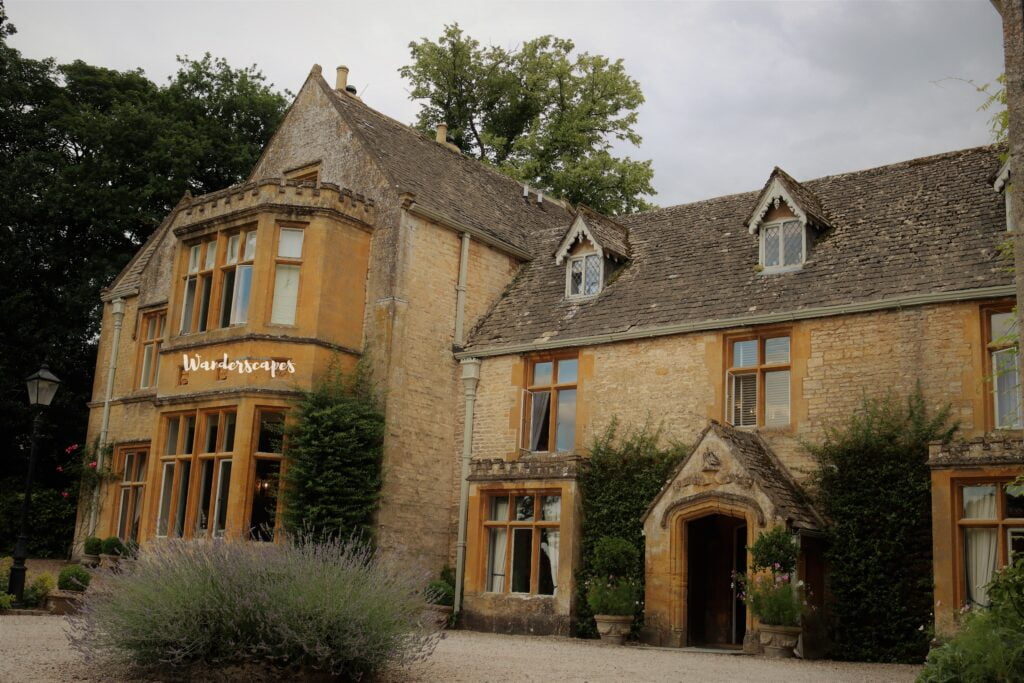
Upper Slaughter – A (doubly) Thankful Village
Anyone with a slight knowledge of English history would know that the country suffered significant loss of lives during the World Wars. People from all over the country lost lives in these two terrible wars. However, some places in the country did not lose any life in World War. Such villages are known as thankful villages. Upper Slaughter is a thankful village because everyone from the village who served in the armed forces survived World War I.
Interestingly, the village did not lose anyone in World War II as well. So, it is a doubly thankful village
Back at Lower Slaughter
We started to walk back to Lower Slaughter as it was getting dark. As we reached the village, the day was slowly turning into night. We clicked a few more pics and took in the view for some time. Then, reluctantly, we bid bye to the charming Slaughters.
Although tired after a long day, we found a strange sense of peace engulfing us, mixed with a bit of sorrow as we pulled away from the most picturesque villages we had ever seen.
Click here to watch our vlog on the Slaughters.

